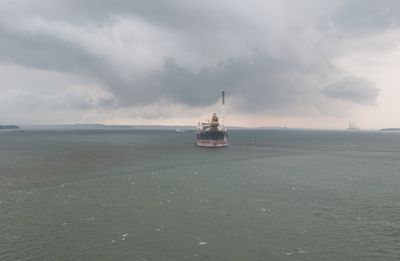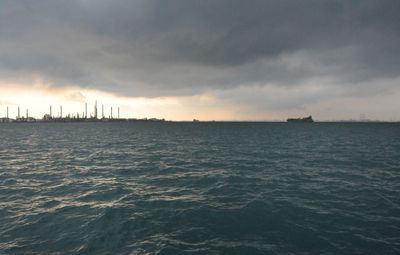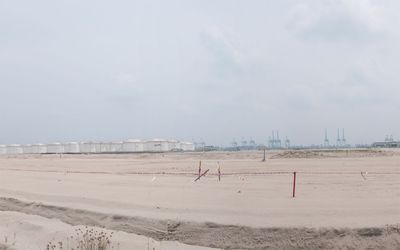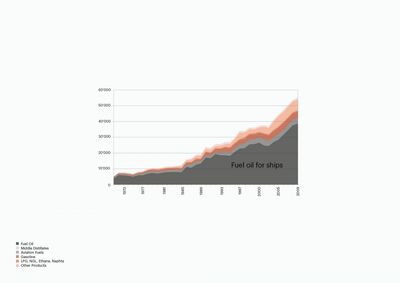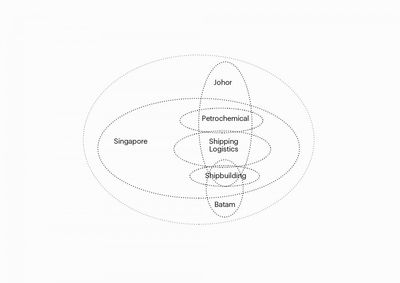EnergyThe Extended Strait: Singapore's Oil HubMartin García and Magnus Nickl
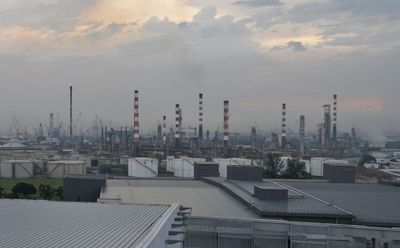
Ever since its independence in 1965, Singapore has been importing nearly all the energy it consumes. Today, its electricity is generated from around 80 % of natural gas and 20 percent of petroleum imports.
Not only is Singapore completely dependent on imported energy sources; the city-state actually imports more than double the amount of energy it spends for consumption. The reason behind this surprising strategy is the booming petrochemical sector on the island, developed since the 1970s and strongly expanding since the mid 1990s. At the time when electronic manufacturing in Singapore was beginning to loose its international competitiveness, the Singaporean government identified existing potentials for developing the export oriented petrochemical industry. Being one of the biggest harbours in the world, having strong banking and insurance sectors, political and economical stability, and China as a fast emerging market in the region, have proven to be the key factors in establishing a strong oil industry on the island.
Today, Singapore is developing toward one of the biggest oil and gas hubs in the world. It is considered to be the world’s top bunkering port and the third largest oil-trading center with more than 800 professional oil traders working on the island. Besides, Singapore is also one of the major oil refinery centres in the world. In total, the oil sector creates nearly 20 % of Singapore’s exports and represents one of the strongest pillars of the economy for the city-state—paradoxically, without sourcing a single drop of oil within its territory.
The history of the oil industry in Singapore began in 1891 with Shell as an oil bunkering pioneer, supplying shipping companies with fuel oil. Around the steadily growing oil trade on the island, various oil related spin-off sectors emerged in the last decades, such as the petrochemical industry, oil and gas equipment manufacturing and rig manufacturing. Singapore for example now owns 60 % of the world’s oil-rig market.
On the one hand, Singapore’s development toward a diversified and complex oil hub appears as an imported construct; on the other hand, the ideal local conditions have made it attractive and prosperous.
The goal of the work was to describe the character of the energy system in Singapore and the region, and to speculate about its implications. Is Singapore becoming a global petrochemical hub? The study also investigated the urban impact of petrochemical facilities and infrastructures in Singapore.
